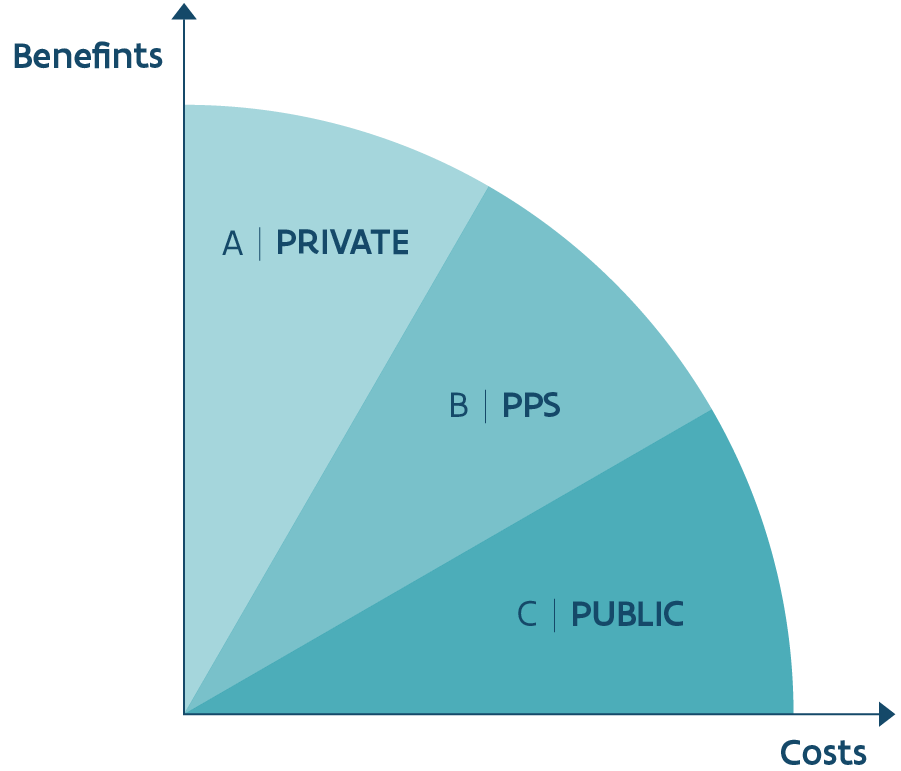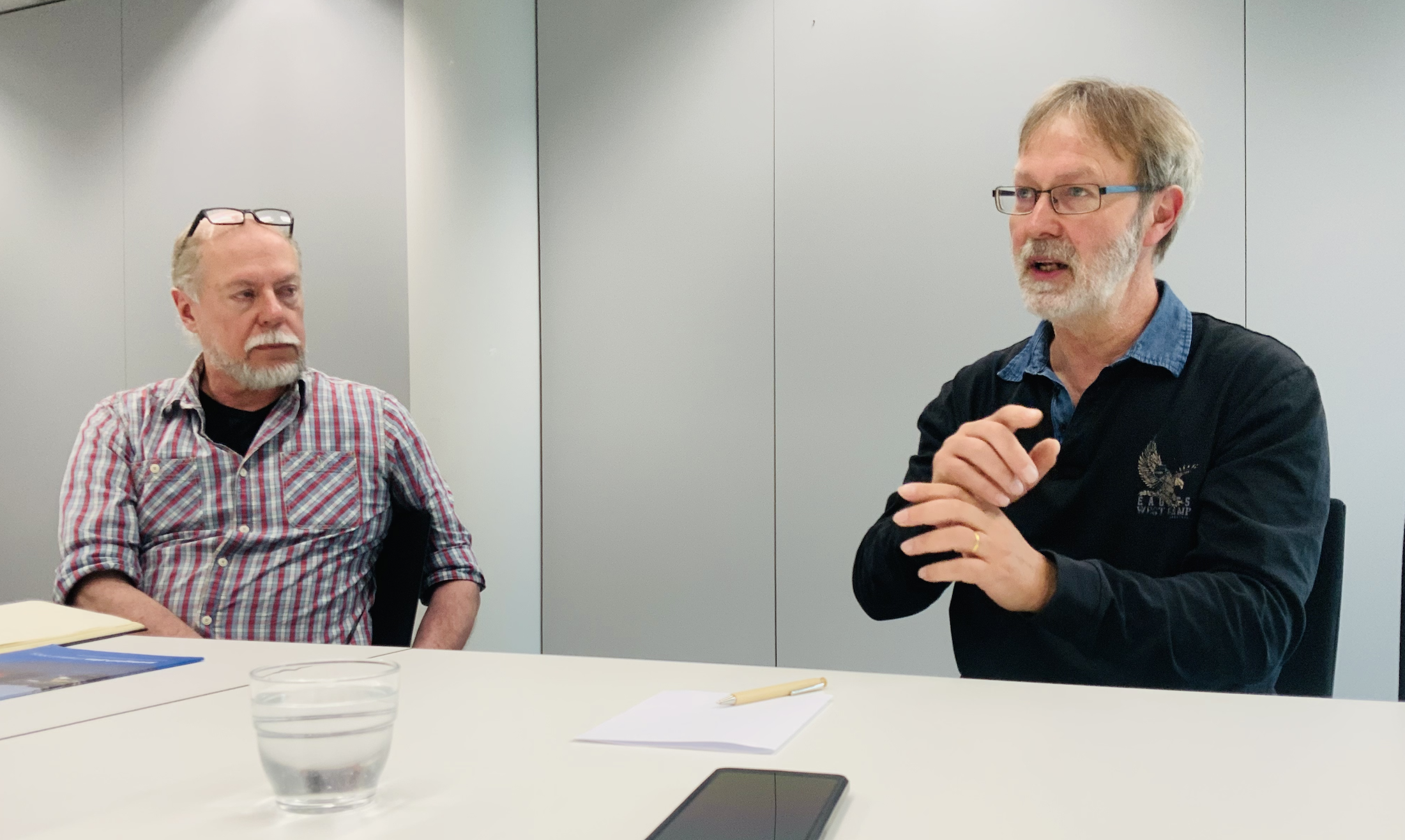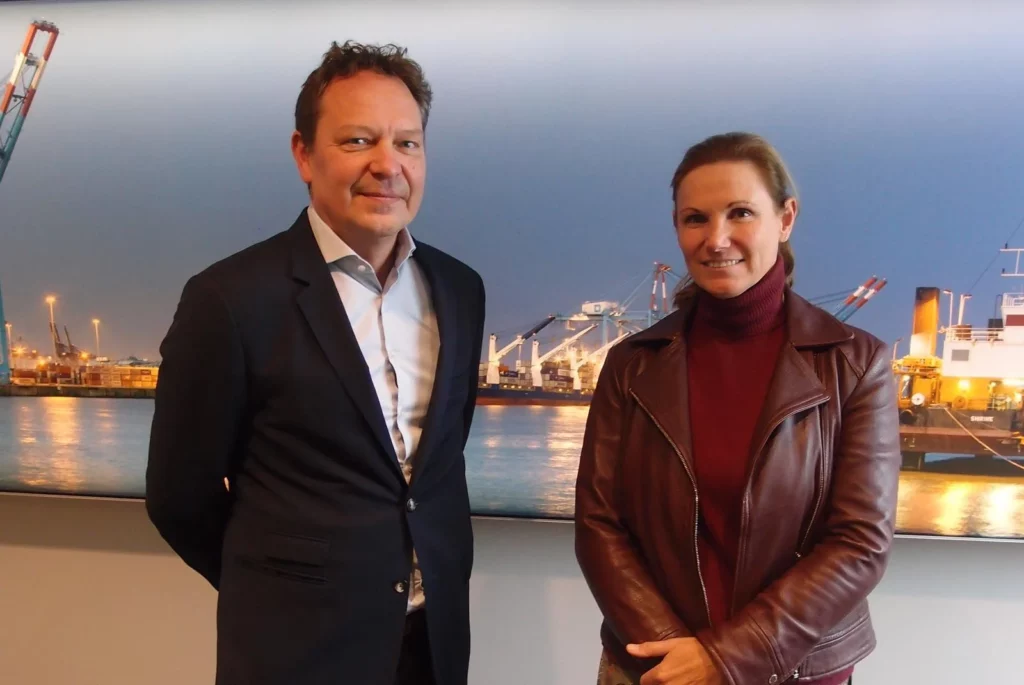How can contaminated sites in ports be reused for a circular transition? While the Flemish Public Waste Agency (OVAM) initially focused on the remediation and closure of landfill sites, it later diversified its services to include different types of contaminated sites and approaches, including brownfield and blackfield sites. We spoke to Eddy Wille (Senior Advisor, OVAM) about what is known as ‘land reclamation’ or ‘port area regeneration’. Eddy worked for 32 years in the OVAM’s soil department and has been negotiating brownfield convenants since 2009.
From landfills to brownfields to blackfields
“We now have a good inventory of the more than 2,600 landfills in Flanders, accounting for an area of 165 square kilometres,” says Eddy Wille. “For the other types of contaminated sites, such as brownfields, we do not yet have a complete overview. However, based on the aggregation of various data, we can already make a good estimate of where there is a greater risk of contamination”.
The 165 square kilometres of landfill sites – comparable to an area the size of the city of Ghent – reflects the potential of densely populated Flanders to remediate and regenerate contaminated sites. In the context of tensions between climate goals and biodiversity, site regeneration deserves more attention.
But regeneration is also very costly. The clean-up of the Carcoke site in Zeebrugge has cost €71 million so far – which would not have been feasible without public funding. Regeneration is often about sensible and rational cooperation between public authorities and private partners.

Source: OVAM
La Floridienne
It was Eddy Wille himself who was one of the first to talk about ‘portfields’ when talking about brownfields in port areas. It was at a conference in Philadelphia (US) in 2011. “We had just worked on the La Floridienne site in Ghent (BE), where the Kluizendok is now located,” says Wille. “The interesting thing about this project is that by tackling the remediation, we could immediately start preparing the new dock. To construct the dock, new quay walls had to be built. We then built additional walls to contain the contaminated soil. We also immobilized the soil itself to prevent the contamination from spreading to the groundwater. Because the site had been rezoned as a dock, we were able to work very efficiently on the site. So, we were able to solve the remediation challenge immediately in a very functional way.
In each case, the approach is tailored to the site and its legacy. “We did the same at the Damian Hospital in Oostende (BE). They wanted to build a deep basement, including excavation work and building walls. We incorporated these plans into the best possible approach to address the contaminated soil,” says Eddy Wille.
Rodenhuize, brownfield in the North Sea Port area
“In the past, factories in ports often had their own landfill sites. For a long time, the soil was seen as a safe buffer or storage area for waste,” says Eddy Wille. “Chemical waste was also transported by ship to the sea to be incinerated, to avoid any possible nuisance on land. Fortunately, all these practices have come to an end. Dumping on private land has been banned and specialised chemical waste treatment facilities have been built”.
Meanwhile, we have historical contamination. The port industry moved to the North Sea to allow larger ships to enter the port and to make more space available. The old port areas close to the city allowing for urban regeneration. Eddy Wille noted, “The redevelopments of these old city harbours are often a mixture of offices, housing, general functions such as schools, always interspersed with green areas, a bit like a brochette. A mix of functions is easier to sell at the local community than economic activities. Although the new manufacturing industries are not nearly as noisy and polluting as the industries of the past, local residents can be averse to possible conflicts (the new NIMBY). Support for housing and recreation is high, while the integration of new economic activities in the city remains a hot topic. Another tension associated with the downstream shift of industrial activity away from the city is that this port industry is moving closer to rural areas resulting in other environmental impacts.
Where can this future port industry go? Brownfield and blackfield policies play a crucial role here. For example, with the new development of North-C Circular, the 70-hectare site between the Rodenhuizedok and Arcelor Mittal in the North Sea Port area (BE). New circular industrial projects were to be built there, but the same site was also home to the De Lange Akkers landfill. “Usually on these mega sites you have a variety of problems. On these sites, you easily find a patchwork of dossiers. It is important to develop a vision for such areas, such as the port, as a bigger picture”.

Image: North Sea Port
The North-C Circular would create space for CCU, starting with Carbon Capture and Utilisation pilots, and should contribute to the climate goals of Arcelor Mittal and the port authority of North Sea Port itself. However, little is known about how circular the redevelopment of the area will ultimately be, and what synergies will be created between the various projects, with the port and surrounding area. A Brownfield covenant for the area will be signed with the Flemish government. This will make it possible to work on the concrete redevelopment of this port area over a longer period of time within the agreed framework. It will also be adjusted if there are new developments or points of attention, so that the objectives remain within reach. If problems or issues arise, they can still be addressed. What is certain is that there will be circular port activities, a rather logical decision on the part of the Flemish government and the port authority, which has decided to use some 150 hectares for circular economy by 2025.
Soil care in 4D, including time and scale
Eddy Wille likes to talk about soil care in 4D. “You also have to put the 3D volume into a time dimension,” says Eddy Wille. “Too often we have seen soil as an eternal buffer or storage. That is over. We also know that we are coming up with solutions that will never last forever. Just as spatial planning evolves above ground – for example, in the search for efficiency – it should also be seen as evolving below ground. Everything is temporary”. One example Wille likes to give is the evolution of flood risk areas and the location of contaminated sites. The two interact. Better water management does not happen in isolation, and water management must evolve with it.
“When they look at contaminated sites in the US, they use a ‘conceptual site model’. This is already a very systematic description of the condition of a site and a good basis to work on. But you really need to go one step further and use a systems approach. In this system you have several elements, such as: natural, ecological, industrial and human. These elements interact and need to be seen in a time perspective. It’s a message that we keep bringing over and over. Forecasts are also part of the picture. For example, we use VITO’s ‘Spatial Model’ to assess the expected spatial pressure on a particular site, so that specific soil requirements can be taken into account when redeveloping a site. One example is the urgent need for housing. This can also be a positive win-win situation. An approach developed by the Vienna University of Technology and OVAM was used to plan a solution to the housing shortage in Berlin. For example, they identified former landfills where the cost of remediation was less than the value of the land for housing, allowing for market-based development. In this way, the use of greenfield land could be avoided and landfill could be reclaimed.”
“It is also never about the site itself, but the scale in which the site is situated. So we always look at the impact of the site in its immediate surroundings, the community, an region and ultimately a global perspective, with climate and biodiversity as examples”.
Who pays?
The difference between blackfields and brownfields can be seen in the question of who can carry out the remediation. In the case of blackfields, the contamination is so severe that a private party will never invest because the remediation costs are too high. In Flanders, in the event of failure, OVAM will take over the site and the remediation for a symbolic euro, in order to extract the maximum social benefit from the site after the remediation.
According to Eddy Wille, there are three main approaches to remediation. A first approach (C) is the one where the government must solve the problem. A second approach (B) can involve cooperation between public and private partners to solve the problem. As a final approach (A) the problem can be solved entirely by private means. “Why not?” asks Eddy Wille. “If the cost-benefit analysis is right, a private party can include remediation in the redevelopment process. OVAM will then help with the outline, provide information and also help to ensure that everything is done in accordance with the rules. We are already working hard on this by making our data available.
“The Brownfield Covenant Decree in the Flemish Region requires us to issue a call for proposals at least once a year, but we are also going to start identifying sites ourselves. There is a move towards mapping. Bringing together different data will give us a better understanding of the problem areas where an initiative is wanted. OVAM also wants to remove uncertainty for potential investors in its official projects. For example, when OVAM organises demolition, the soil contamination can be better mapped. This gives a better idea of what exactly is happening on the site. This comforts investors and increases the chances that the market will function better afterwards”.

Approaches to contaminated site remediation
- A – Private approach (brownfield)
- B – Public-Private approach or cooperation (brownfield)
- C – Public approach (blackfield)
Source: CABERNET project (EC Framework Programme 5)
Combining remediation with social benefit
Eddy Wille likes to illustrate the search for social benefits with the example of a gypsum landfill in Ghent (BE), near the Ringvaart canal and Eiland Zwijnaarde. “It is practically the last water-related site close to the centre of Ghent. Building car parks was an option, but the location of the site also makes it ideal for organising green city logistics. Goods can arrive by barge and then be prepared for the ‘last mile’ by sustainable transport or even via the water network within the city. This type of logistics has already been demonstrated in the redevelopment of the De Krook site, Ghent’s library and city centre for knowledge, culture and innovation. Contaminated soil was removed by barge while new building materials were brought in”. It is a question of weighing up the value of such a site for the city against a purely market perspective. After all, this is a choice for the new infill of the 21st century, and the consequences of that choice will be felt for a long time to come. “The question is also: how far do we need to remediate the gypsum landfill to achieve its after-use: what can we safely leave there and how much should be disposed of? Perhaps the solution lies in a multiple design, such as combining urban distribution with parking (on the roof) or with other useful spatial functions,” concludes Eddy Wille.
May 23, 2023. Eddy Wille, Walter Tempst, Adrian Hill and Floris Van Cauwelaert.
Image credits: Floris Van Cauwelaert and Circualr Flanders



